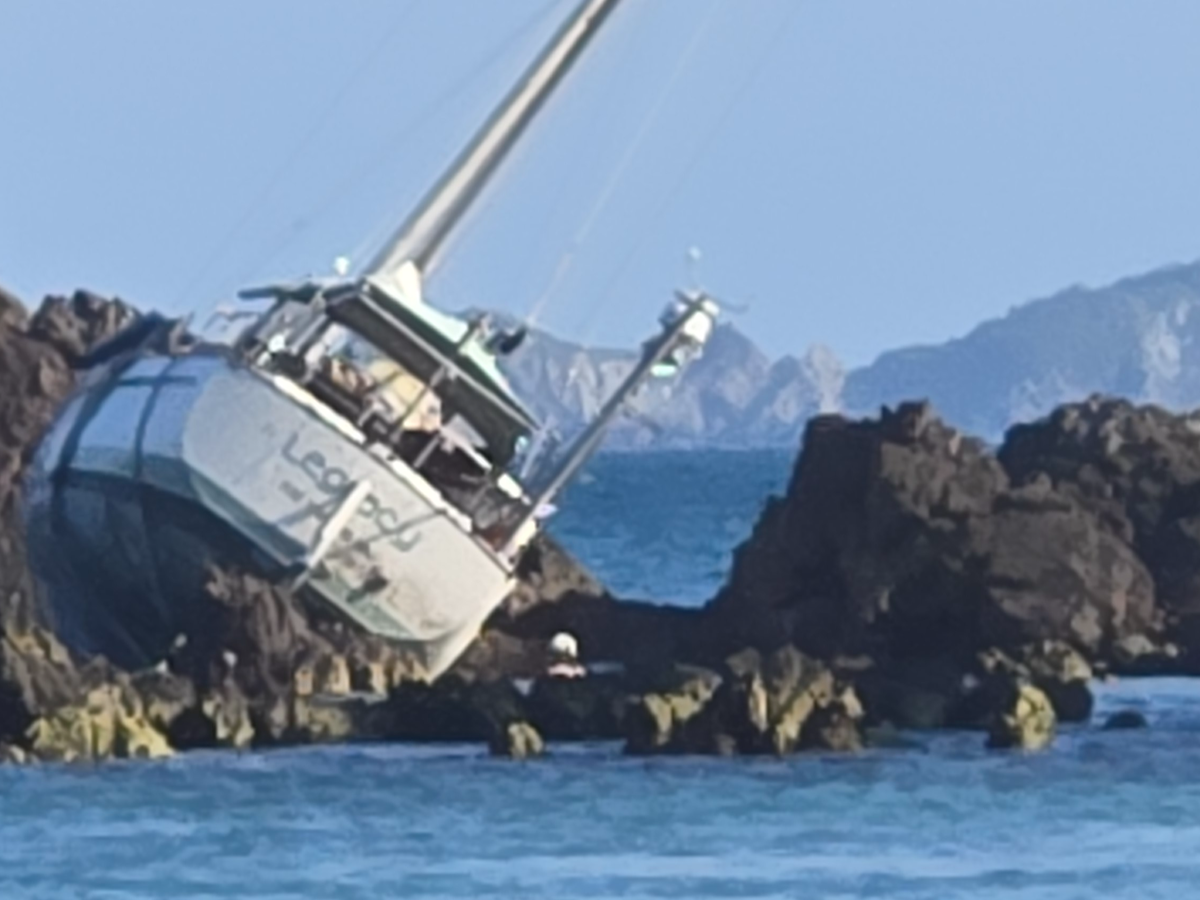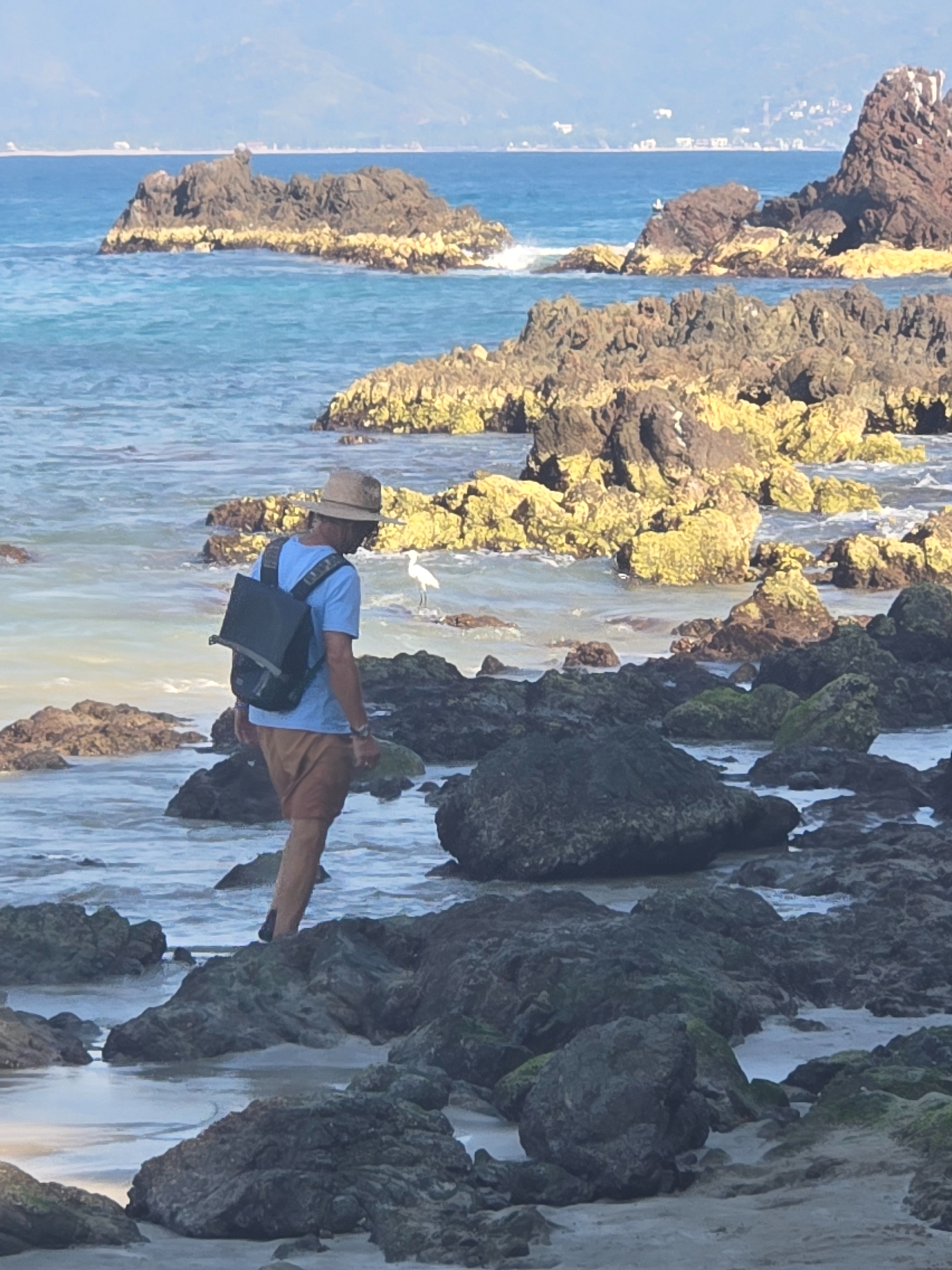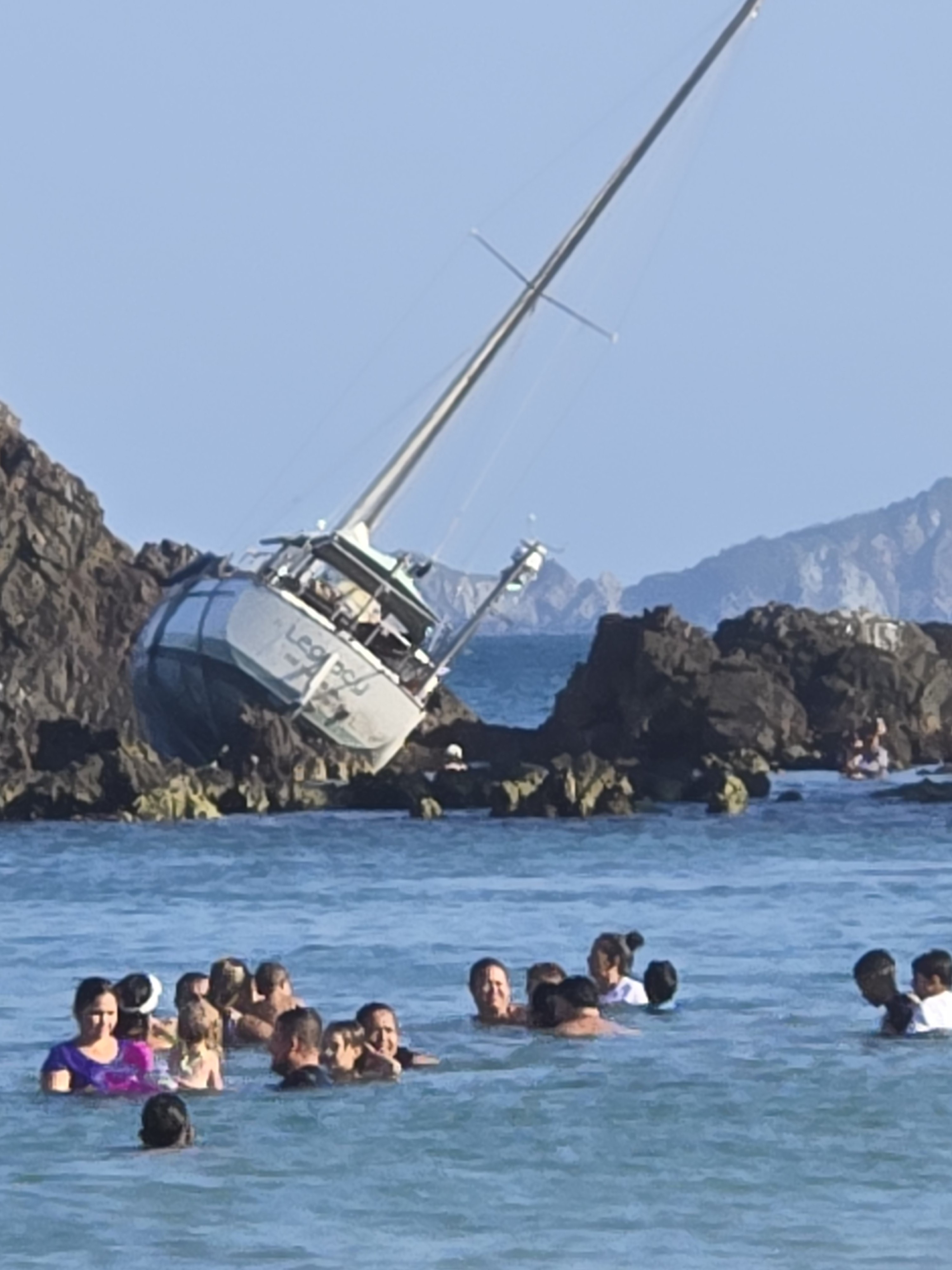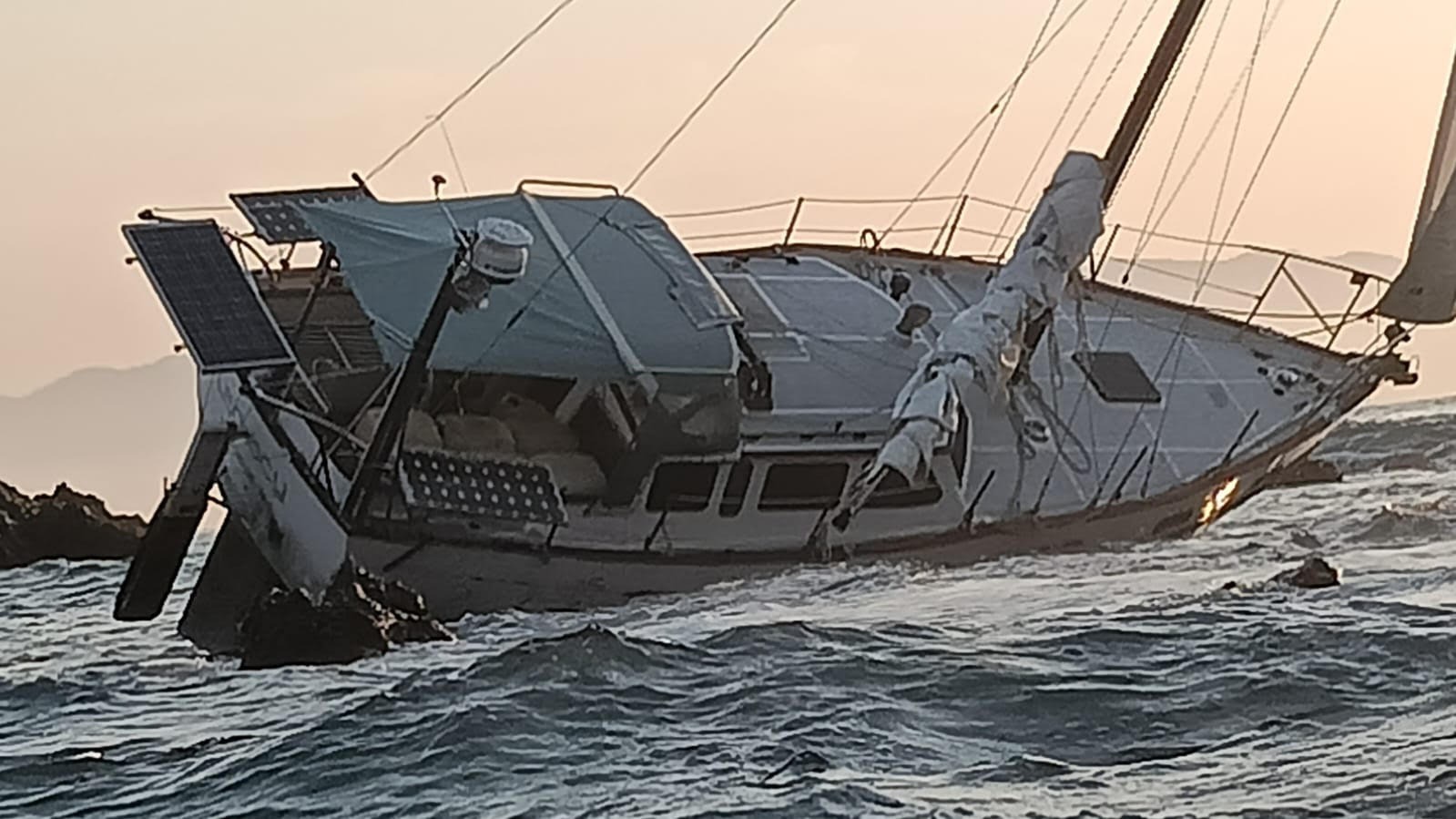I am Luke J Tornatzky from Port Townsend Washington for more than 20 years. This is the worst day of my life and in the life of Legacy a 1983 Swift 33. Like many cruising single-handers and couples, this boat was my home and my way of life. She allowed me the opportunity to explore the natural wonders of the ocean and the coastline while enjoying wildlife like blue footed Boobys, whales, rays, dolphins, fish, a diversity of birds and sea turtles. For 9 years I have discovered gorgeous coastal scenes and enjoyed Mexico's smallest and most developed west coast communities. Legacy gave me the freedom and inspiration to paint oil paintings of the beauty of sunsets, ocean waves, rocky coast-lines, ocean views of fishing villages, moon glows on the water, and stunningly beautiful plants and trees. My motive has been to capture the realism and tranquility of mother nature from the perspective of the sea.
But suddenly, Legacy is in an incredibly tight spot thrown up into a shallow rock garden around the corner from the beach against a rock wall in the ecologically sensitive coastline of Tenacatita Bay known as the Aquarium. The loss of the vessel is a tragedy that played out like a tense and eerie uncontrollable doomed sequence of events. Just 1.6 miles from the anchorage, an hour before sunset, the wind died and we dropped the main and the jib and started the engine. A shocking clanking sound, a look at the water astern and we saw 2 strings of blue long-line fishing gear disappearing under the boat. It was not there 30 minutes ago and no warning signs on the water as we watched the bottleneck dolphins dancing and surfacing at the stern and the bow. My boat hook pulled up one line and then the other. I pulled hand over hand for minutes on each side and cut both sides of the same line. I was hoping that I could free up the propeller. I knew I had to grab my underwater gear and drop into the sea with fins on and a sharp knife in hand. The propeller and its shaft were tightly wrapped, and I could barely see as the sun was already on the horizon. I cut away the blue line on the propeller but the long fishing hooks prevented cutting away much of the tightly wound line on the propeller shaft so I could not set the propeller free.
Once back onboard, I set the jib despite no wind, checked the chart plotter, and set a course for the middle of 10 bright lights on shore. To keep the boat moving my helms-mate had to steer more to port than I wanted, but the boat had to keep moving. We were watching the depth and when I saw 20 feet I went forward to drop the jib and use the nearly new windlass on the bow to drop the anchor and the chain. The anchor chain slid out and dropped the anchor about 3 feet and then surprisingly, the pawl popped into place and stopped the chain. I ran from the bow to grab a screwdriver to pull the pawl out and set the chain free. By the time I returned to the windlass on the bow, we both felt the impact at the helm and the bow hit a submerged rock. I ran back to the cockpit, turned the engine on and put the gear in reverse; no motion, the propeller was frozen. Immediately, the current in the sea sucked and pushed us further toward shore. It was pitch black and everyone on shore has gone home.
Historically, in similar situations, other captains have taken a boat off short into deep water and sank her, some seafarers let their boats sink at the dock, others take the boat to a remote area of a marina lagoon and let her sink with only a ghostly mast still visible, while others just leave her abandoned at anchor, others untether a boat so it drifts aimlessly at sea until she sinks or comes to shore, or boats that can come to shore are broken to bits and taken to landfill.
In this case, the Port Captain highly recommends hiring the only company along this coastline 30 miles away. The job will require a water saw which is a very special piece of equipment, an experienced and highly trained person to cut up my once beautiful home, a skilled team to wrap parts of the boat and steer them to shore so they can be picked up by a backhoe and placed in a series of dump trucks that will drive my boat to a designated government approved land grave yard for fiberglass boats. Only then will I receive a certificate of environmental compliance. The estimated cost of the salvage project is 170,000 usa which far exceeds my lifetime savings.
Now that Legacy must be extracted from her rocky perch, I face the most important ethical, environmentally sensitive, and legal decision of my life despite the consequence of financial ruin. I am obligated to do everything possible to avoid any and all environmental damage to this very special heartfelt sanctuary loved by so many sailors, fisherman, tour guides, local residents, tourists and national visitors. In my heart of hearts, I want to do the right thing, so I am calling upon friends of the ocean, friends of the environment, and friends of all current and future sailors to donate to help me survive this accident.
Thank you to everyone for reading my story and for your contribution to protect the ocean and all forms of sea life.
Luke
Lukejtornatzky.com





